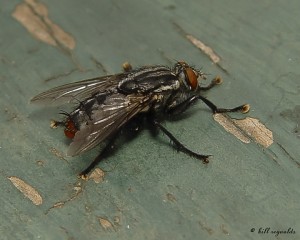Prairie ironweed (Vernonia fasciculata) is common in Minnesota in the lower two-thirds of the state and in the northwestern border counties. Its showy, reddish-purple flower heads appear from July to September on wet and moderately moist prairies. It is pollinated mostly by butterflies, skippers, and long-tongued bees.
This species is identified by the hairless leaf undersurface that is dotted with pitted glands. When held up to the sun or other light the glands appear as translucent dots.
There are two subspecies of prairie ironwood, both of which are found in Minnesota. The eastern subspecies, ssp. fasciculata, is identified by the longer stem; longer, narrower leaves; and upper leaf surface that is smooth to the touch.
http://minnesotaseasons.com/Plants/prairie_ironweed_(fasciculata).html




